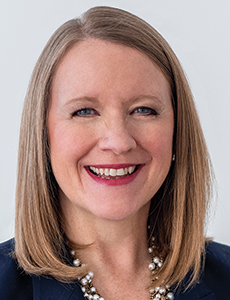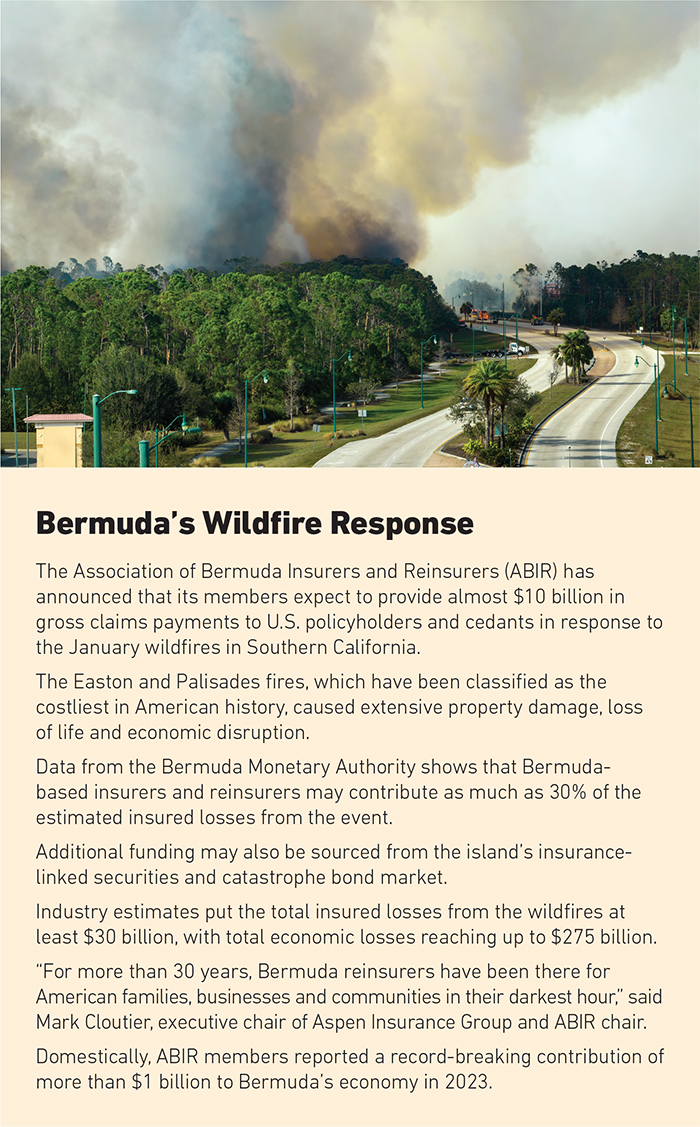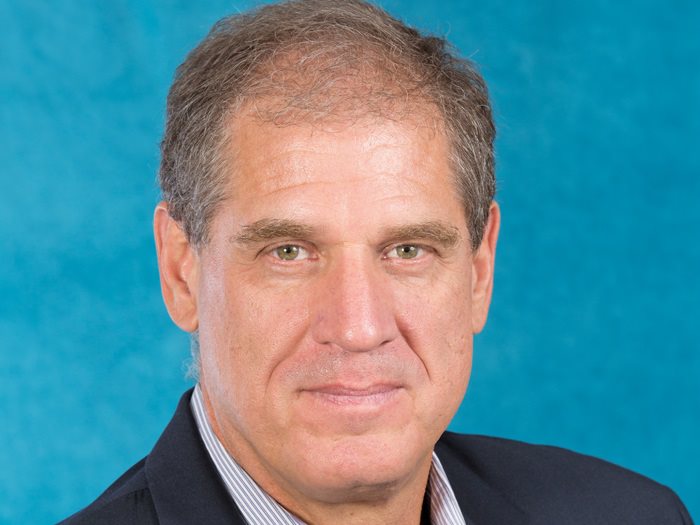From Wildfires to Litigation, Reinsurers Face a New Era of Risk and Opportunity

The reinsurance market endured one of its toughest years in recent history in 2023 with a record 142 insured natural catastrophes hitting reinsurers’ balance sheets, with losses topping $108 billion.
As a result, reinsurers across the board hiked rates, pulled back on coverage, and tightened terms and conditions.
Fast-forward two years, though, and it’s a completely different picture.
The June 1 renewals were largely positive, with property-catastrophe pricing continuing to moderate and capacity starting to return as new entrants join the market.
Meanwhile, dedicated reinsurance capital hit a record high of $463 billion at the end of 2024, up 10% year-on-year, according to Howden, fueled by higher asset values and catastrophe bond growth.
Last year was also among the most profitable for many reinsurers in recent times, while Swiss Re estimates solvency ratios of more than 250%, on average, for leading reinsurers. Yet, despite its undoubted progress of late, the reinsurance market continues to be faced by a host of both traditional and emerging risks, including cyber.
“Most areas of the industry, including reinsurance, began a disciplined response to the soft market years of 2014-2019,” said Emil Issavi, CEO and president of Ryan Re. “Excluding some of the professional lines and cyber, the market has had its longest underwriting disciplined cycle.
“Perhaps somewhere along the line, we sensed the increasing and ever-changing risk environment which certainly become more complicated by the effects of the COVID pandemic. Yet, the largest development to me is the growing uncertainty created by the possibility that the industry simply kept up with the evolving world of risk, natural or otherwise, and the recent years are not like the past hard market cycles.”
Property Market
The property reinsurance market has become increasingly more challenged by risk and volatility as a result of natural disasters caused by climate change. Following the high losses from the 2023 US hurricane season and the rise in secondary perils such as floods, wildfires and hailstorms, reinsurers sought to reduce their exposures, however, now that the market is starting to return to some stability.
“The whole industry — not just reinsurers — is facing a future where we are seeing insured losses from natural catastrophes rising, on average, five to seven percent each year,” said Monica Ningen, CEO P&C reinsurance U.S., Swiss Re. “The industry paid out more than $137 billion in natural catastrophe claims alone last year, according to the Swiss Re Institute. Of those losses, nearly 80% of them stemmed from the U.S.
“That really highlights how exposed the country is to natural disasters like hurricanes, floods, wildfires and earthquakes. It’s usually climate change that makes the headlines as to why these losses are increasing and, while it is playing a role, the main factor driving losses is growing populations and accumulation of assets, as well as inflation.”
She added, “Exposure growth continues to drive a demand for increased reinsurance purchase. Broadly speaking, reinsurance supply has met the increased demand and the property cat market is competitive, yet this is dependent on structure, terms and historical performance.
“We’re looking for underwriting discipline from primary carriers, notably in commercial property, as competition has been driving decreasing rates, despite significant nat cat activity.”
Rising Casualty Costs
While property reinsurance had become more restricted, casualty capacity has remained relatively consistent and even increased in some areas such as workers’ compensation as investors have turned away from more volatile property lines.
However, in recent years casualty claim costs have started to mount, driven by adverse reverse development caused by social inflation, as U.S. funding litigation grew by 39% between 2019 and 2023, according to Westfleet Advisors. Subsequently, rates have risen by as much as 15% to 20% in some areas.
“In terms of general and auto casualty lines, we are now in our sixth year of positive rate change with a tremendous amount of what I call limits management and re-underwriting,” said Issavi. “I anticipate we will continue to see positive rates into the foreseeable future driven by uncertainty created by post-COVID increased litigation abuse including growth of litigation funding.
“We could point to uncertainties due to changes in expected patterns emerging in recent ‘hard market’ years, but the main growing culprit is litigation abuse, period. It has become a heavy tax on society and the industry should push for more disclosures on both funding and award distribution.”
James D’Onofrio, executive vice president and general manager at Liberty Mutual Reinsurance, U.S. said, “The biggest challenge right now is the overall risk environment. Whether it’s macroeconomic, geopolitical or the weather, there’s just more risk, uncertainty and volatility out there.
“It’s key for reinsurers to understand the pricing adequacy of the different areas of the market and their profit potential. There’s still plenty of demand for reinsurance, especially on the catastrophe side, but reinsurers need to ensure that they’re providing value beyond simply capacity to their clients through having the right knowledge and expertise, and products to serve them.”
Despite the multiple challenges that reinsurers face, opportunities abound too. Chief among them is the need for reinsurance in an increasingly complex global risk environment.
By investing in and developing the right talent and technology, and leveraging strategic alliances with key insurance and broker partners, reinsurers can capitalize on these opportunities. It’s also paramount for reinsurers to maintain strong underwriting discipline, particularly during these times of heightened risk.
Another key trend that has become increasingly prevalent in the reinsurance industry is the use of data to gain greater insights, and make more accurate and better decisions. Even the process of data exchange is yielding improved results. For example, Swiss Re improved its allocated cash by 70%, SCOR achieved 80% data accuracy by using digital data exchange and standards, and MAPFRE RE reported 50% efficiency in processing and queries.
“Certainly we’re seeing a massive trend in terms of digital data exchange around three core components — pre-bind and post-bind, placing and accounting, and claims, and really that’s a key upward trajectory and is gathering pace as well,” said Chris Newman, global business leader and president international at ACORD. “Of all the transaction types, placing is very much the hot topic at the moment.
“Ultimately, it’s about replacing email-based transactions with more contemporary APIs, newer technologies and standard payloads that enable data to be exchanged in real-time.”
There has also been an increased adoption of artificial intelligence (AI) to identify critical risks at greater speed and scale. This enables reinsurers to better understand and underwrite individual accounts.
“AI does a really good job of helping (re)insurers understand the ‘unknown unknowns’ or the questions they don’t know to ask,” said Shawn Ram, chief revenue officer, Coalition. “It can look at a portfolio and understand where the critical risks are, where most concerns aggregate and what the cat load that should be applied on a particular portfolio versus an attritional loss aspect.”
Moving forward, the reinsurance market looks set to continue on its current stable trajectory. As it continues to evolve, AI and other cutting-edge technology will be critical in identifying key trends which will drive quicker and better responses to any opportunities that may arise.
“It’s a more challenging world in terms of risk than ever before,” said D’Onofrio. “But, as it evolves, the industry is well positioned to meet all these challenges.” &













